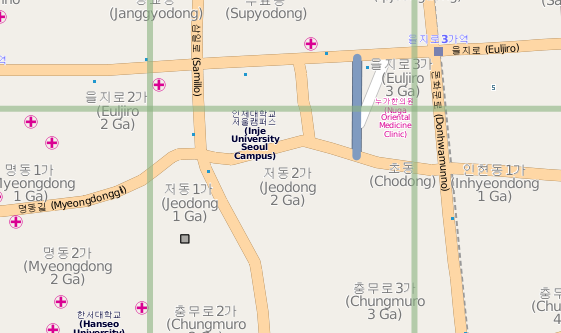The past couple of weeks have unfortunately been very difficult for MapOSMatic. The rapid growth of the OpenStreetMap database with the recent massive data imports drastically reduced the time we thought we had to migrate away from our server that we knew would not be able to host MapOSMatic and the full planet database for long. And so it happened, our disk was full.
We started by removing the previous renderings, more and more aggressively, to make room for the database updates and a few renderings, to maintain the service running. But this could not last forever, and we ended up having to stop the rendering queue.
Thanks to the FSF France, we were given access to a powerful server that could temporarily host the OSM planet database until we can find a more perennial solution. In the past two weeks, I spent as much time as I could (which was not much since I was relocating to the United States at the same time) setting up a PostGIS database on this new server. This database is now operational, and currently catching-up its replication lag from the latest OpenStreetMap data.
MapOSMatic is now hosted on two distinct servers. The first one is provided by Enix, a French hosting company. It hosts the rendering queue, the web service, this blog, the wiki, the statistics and of course the rendering results. With 1TB of disk storage available, we have enough room to keep a lot more renderings, so your maps will be available for a greater length of time (of course you still need to regenerate them to get up-to-date data). The second server, from the FSF France, hosts solely the PostGIS database, with one task only: keeping it as up-to-date as possible. For now, we are still on a daily updates schedule, but I’m working on moving to more frequent updates, eventually up to minutely updates.
With our apologies for the service downtime, we hope you’re as happy as we are to see MapOSMatic back on its feet again! All the rendering requests submitted while the queue was halted are now being processed, so don’t hesitate to go search for the maps you recently requested, they are probably available now! And stay tuned for some more updates, the new version of the MapOSMatic rendering engine is just around the corner…



 Funnily, the main title of the magazine was about the supposedly wonderful new features of Windows Seven. Something most OpenStreetMap contributors probably don’t care about
Funnily, the main title of the magazine was about the supposedly wonderful new features of Windows Seven. Something most OpenStreetMap contributors probably don’t care about